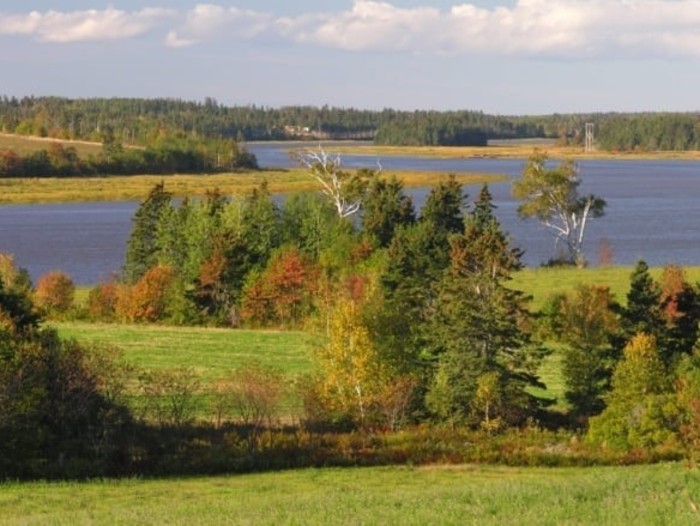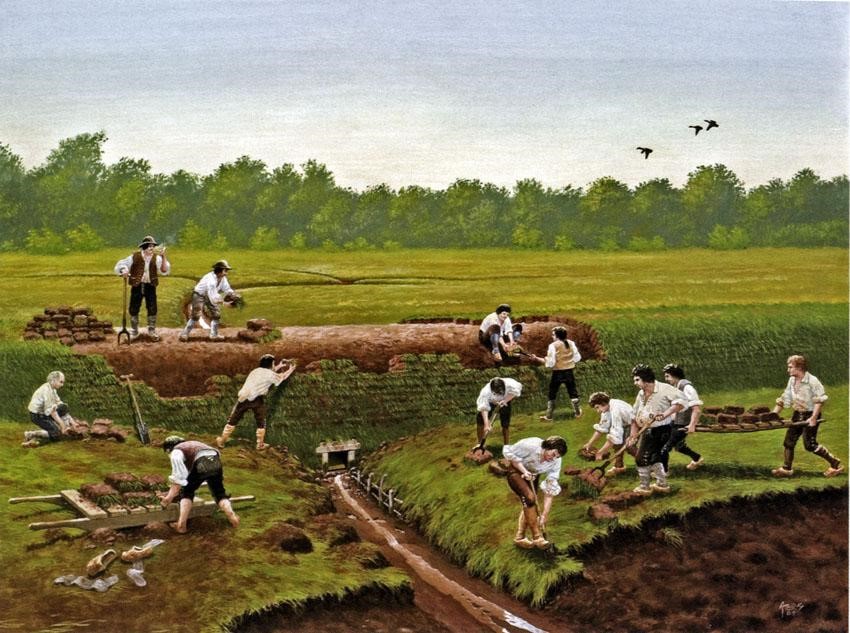
The history of the river of the Northeast (today Hillsborough River) is largely the history of the genesis of the Acadian people of Prince Edward Island. In 1720, the first two Acadian families on the island permanently established themselves at each extremity of the waterway, one at its mouth, Port LaJoye, and the other at its head, where the great marshes of Mount Stewart are located. This historic 45 kilometres long river has been registered with the Canadian Heritage Rivers System since 1997. The river of the Northeast, nicknamed the Great River at the time, cuts the island almost in half. Moreover, this waterway is also its main artery, its King’s Road, between its two maritime poles. The Mi’kmaqs called it “Elsetkook”, meaning a river that cuts through the land. They made great use of it for fishing and canoe communications. The few remains of dike and sluice gate systems (aboiteaux) erected by the Acadians along its shores are just some of the cultural attractions of the river of the Northeast which is also known for its clams.
The first two Acadian families who migrated to Isle St. Jean (now Prince Edward Island) are the Haché-Gallant from Beaubassin (near Amherst in Nova Scotia) and the Martin originality from Port-Royal, the capital of Acadia. A key factor was the Treaty of Utrecht concluded in the Netherlands between Great Britain and France in 1713. Under this international agreement, France renounced the territory of peninsular Acadia (Nova Scotia). However, it retained part of the territory, that is present-day New Brunswick and Isle St. Jean as well as Isle Royale (Cape Breton Island) where the construction of a fortress in Louisbourg would be undertaken in 1719. According to many historians, the signing of the Treaty of Utrecht marks the beginning of the crumbling of the French empire in North America.
Preferring a peasant life to the mega project of a fortress, Michel Haché, said Gallant, decides to settle permanently in Port LaJoye, more precisely on the current site of Rocky Point which was then the summer location of a Mi’kmaq community before European colonization. He arrives at his destination in 1720. He is soon joined by his wife Anne Cormier and the many children of their union, as well as by other members of the Haché-Gallant family. Farmer, carpenter and navigator, Michel also becomes captain of the port of Port LaJoye. Over time, he and Anne are among the most respected settlers on the island.
The first farmers of Mount Stewart

Pierre Martin, in turn, ascends with his son Joseph, the Great River to its end of navigation, where it is too narrow and shallow to navigate. The short portage (less than 3 km) used by the Mi’kmaqs for centuries to reach their eels fishing harboured bay on the Gulf of St. Lawrence is located there. The houses built by the Acadians overlook the great marshes of Mount Stewart. Shortly after, his wife and daughter, as well as other members of the Martin family, notably Charles and Paul, come to live on the site, as indicated by the river of the Northeast’s plan drawn up in 1730. According to the first official census of Isle St. Jean carried out in 1728 by the government of Louisbourg, Pierre and Joseph were farmers.

It would seem that the Martin family did enjoy the presence of bald eagles, sometimes called “sea eagles”. They prefer marshes, rivers and coastal areas, where they can easily find their food. Perhaps the great marshes of Mount Stewart had been recommended to the Martin family members by the Mi’kmaq First Nation people in 1720. Even today, Mount Stewart is known as the capital of bald eagles in Prince Edward Island.
Although the history of Isle St. Jean does not say so explicitly, it is very likely that the Martin family, with the collaboration of other residents of the river of the Northeast, did dry up and desalinate, with dike and sluice gate systems, part of the great marshes of Mount Stewart for agricultural purposes. As elsewhere throughout Acadia, these major community accomplishments helped forge the identity of the Acadian islanders.

